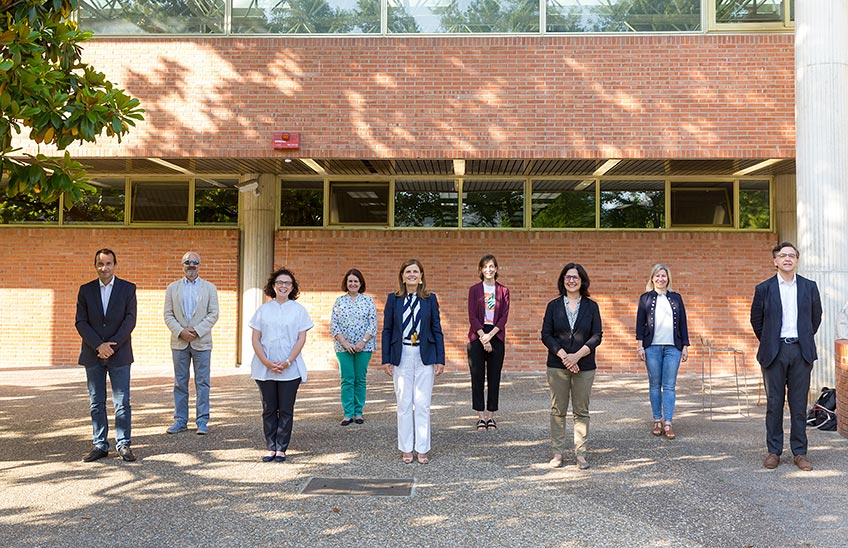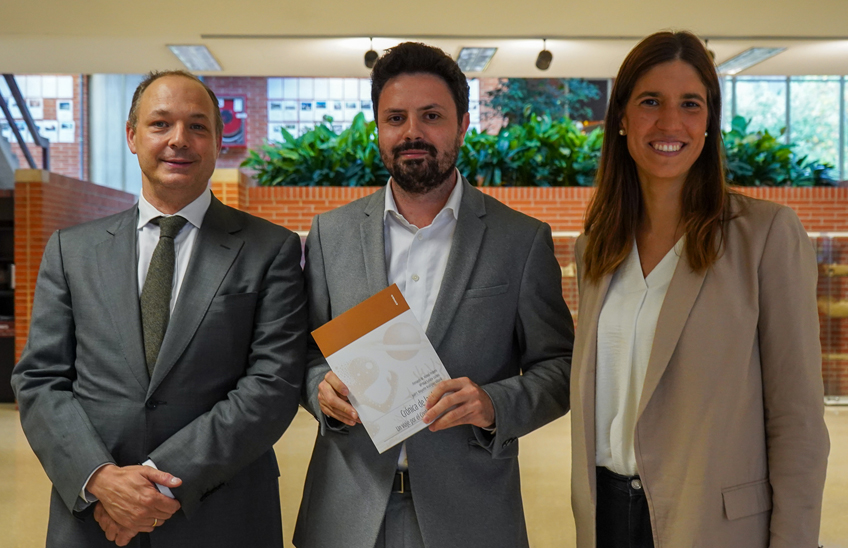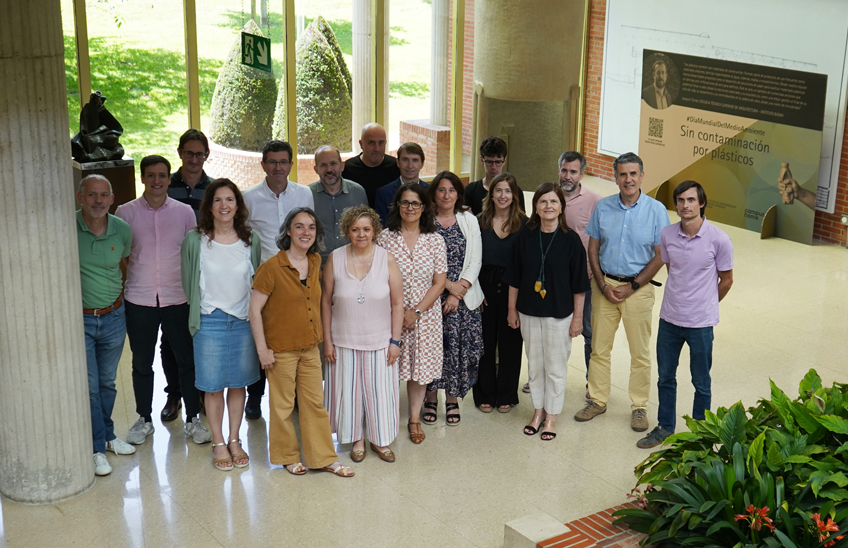Do not ventilate the house when the outside temperature is high and solar protection systems: basic measures against heat waves
Insulating houses, taking into account the orientation or using light colors are measures recommended by the University's group SAVIArquitectura, which studies the effects of global warming on buildings.

PhotoManuelCastells/Researchers at group SAVIArchitecture University.
11 | 08 | 2021
Faced with possible heat waves -such as the one that has been announced with temperatures that will reach and exceed 40 Degrees, according to the State Meteorological Agency- the experts of group of research SAVIArquitectura of the University of Navarra indicate that there are some measures of simple application that can help to maintain the interior of the houses at a temperature as leave as possible.
"For example: do not ventilate the house when the temperature outside is high and protect the windows with shading systems. Many people, because of the idea that ventilation is always positive, keep doors and windows open at inappropriate hours. It is best to do it at night, when the temperature usually drops", explains the researcher and professor at School of Architecture Aurora Monge.
Likewise, the main researcher at group, Ana Sánchez-Ostiz, stresses that the ideal is to insulate the house to improve its performance throughout the year: "Bearing in mind that the response to heat cannot be the same as to cold. That would be like putting on a coat in winter and wearing the same one in summer when temperatures rise".
In this sense, he appeals to take into account these needs of adaptation of the houses for a context of high temperatures. "In this way, when resorting to air conditioning systems - because passive measures are not always sufficient - the house will be optimized to use as little energy as possible and only when necessary". In this regard the director of Master's Degree in design and management Environmental Building clarifies that "for areas like Pamplona, with normally cool summers, we see interesting that the Technical Code of the Building include metrics to justify that new buildings can operate without air conditioning in typical summer conditions and heat wave events, without exceeding certain thresholds of overheating and without endangering health, as already does, for example, the English rules and regulations ".
Special attention to young children, the elderly and people with reduced mobility mobility
Among the passive mechanisms in the construction of housing, the experts of the School of Architecture of the University of Navarra emphasize the design taking into account the orientations -the optimal orientation is north-south-; the use of solar protection -from the placement and proper use of shading systems such as blinds, Venetian blinds, awnings or trees to glass with solar filter-; the leave solar absorptivity of cladding materials -such as the use of light colors on facades and roofs-; the use of natural cooling ventilation when temperatures drop -double-facing homes facilitate this cross ventilation-; or the use of adapted construction solutions, such as ventilated facades, ventilated roofs, landscaped roofs, etc.
"In addition," adds Professor Monge, "if it is necessary to invest in air conditioning systems, it is desirable that these are the most efficient possible in terms of energy and emissions, since temperatures are expected to rise around the globe and increase the frequency, duration and severity of heat waves, as warned by the latest IPCC report published this week."
On this aspect, the group of research SAVIArquitectura leads, together with the universities of Seville and Alicante, the project Climate Readywhich requires citizen participation and whose goal is to study and offer solutions to overheating, as one of the main impacts of climate change in cities. "It is about being as prepared as possible so that this increase in temperature not only does not affect the comfort in our homes but, above all, does not cause the morbi-mortality that we know is associated with high temperatures and that affects, especially, the most vulnerable groups. These are young children and the elderly, people with reduced mobility and with previous pathologies, with special attention to the elderly who live alone," concludes the expert.


